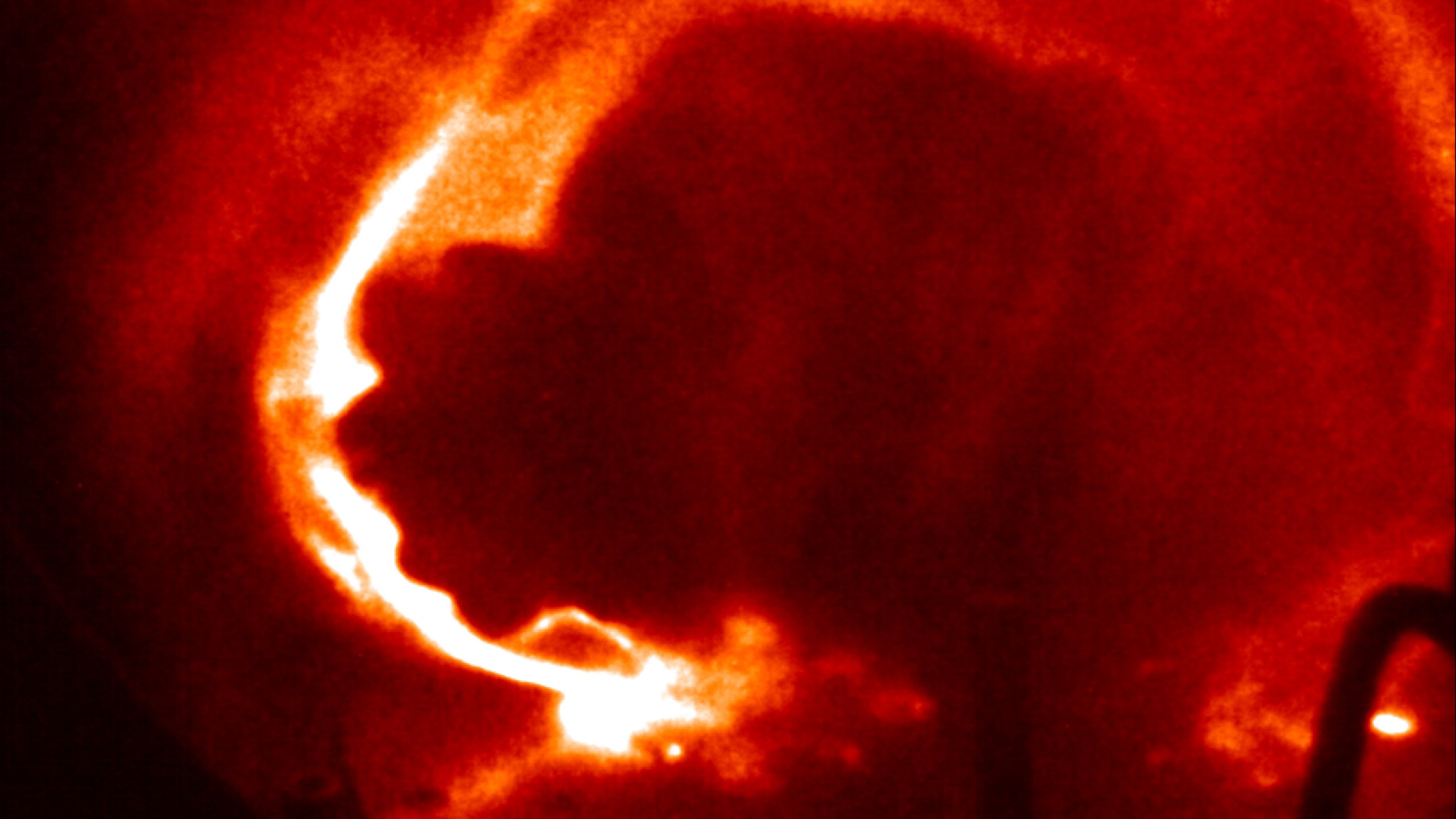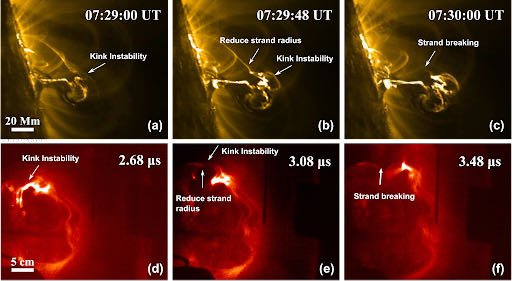Lab-grown solar flares reveal secrets of the sun's coronal loops
The banana-size solar flares could lead to a better understanding of high-energy solar physics.

Scientists have created mini-coronal loops to simulate banana-sized solar flares in the lab to investigate how massive explosions on the sun's surface launch energetic particles and X-rays into space.
While Earth's magnetic field, the magnetosphere, helps shield life from these particles and high-energy radiation, these emissions can still trigger space weather that can disrupt communications and power infrastructure. They can also pose a more substantial threat to equipment and astronauts outside the magnetosphere, making it important to understand these emissions and the solar phenomenon that launches them.
The experiment revealed that rather than having a large single structure, the coronal loops that launch these bursts of energy are braided like a jump rope.
Related: Each of these 'tiny' threads of blazing-hot plasma on the sun is 125 miles wide
"If you dissect a piece of rope, you see that it's made up of braids of individual strands," Yang Zhang, a graduate student at the California Institute of Technology (Caltech) and lead author of the research, said in a statement. "Pull those individual strands apart, and you'll see that they're braids of even smaller strands, and so on. Plasma loops appear to work the same way."
Coronal loops are arches of plasma that arc out from the solar surface, the photosphere, aligned along the sun's magnetic-field lines. These coronal loops act as magnetic highways for charged particles such as the electrons and ions that form plasma.

Coronal loops can reach altitudes of tens of thousands of miles over the sun and can last for minutes or even hours. During this time, they grow and evolve and can sporadically and suddenly blast out billions of times more energy than the most powerful nuclear explosions on Earth,
Get the Space.com Newsletter
Breaking space news, the latest updates on rocket launches, skywatching events and more!
Some of the energy associated with these blasts, known as solar flares, comes in the form of charged particles, while some of it manifests as high-energy electromagnetic radiation called hard X-rays.
While solar scientists have understood for some time that coronal loops and solar flares generate these energetic emissions, the mechanism by which they do this has been less clear. Scientists could get a better understanding of this phenomenon by observing how coronal loops form and evolve.
Researchers have two options to conduct such investigations: They can observe the sun and try to see coronal loops in detail, or they can attempt to simulate them in the lab. In the new research, Paul Bellan, a professor of applied physics at Caltech, and his team took the latter approach.
They built a vacuum chamber containing twin electrodes and charged a capacitor with enough energy to run the city of Pasadena, California (where Caltech is located), for a few microseconds. They discharged the capacitor through the electrodes, resulting in tiny coronal loops and solar flares with a height of just 8 inches (20 centimeters) and a width of 0.4 inch (1 cm). These loops lasted only about 10 microseconds, or millionths of a second, meaning they had to be captured with a camera operating at 10 million frames per second.
Despite the coronal loops' small size and fleeting nature, their structure is identical to that of genuine coronal loops, thus allowing them to be studied up close.
"Each experiment consumes about as much energy as it takes to run a 100-watt lightbulb for about a minute, and it takes just a couple minutes to charge the capacitor up," Bellan said in the statement.
The experiment allowed the team to observe the rope-like structure of the solar coronal loops, and they think this structure could be key to the generation of energetic particles and X-ray bursts.
Plasma is a strong electrical conductor, but if too much current runs through the plasma in a corona loop, its structure can be twisted, creating a corkscrew-shaped instability that can "fray" the coronal loop by breaking its constituent strands. As consecutive strands snap, the strain on the surviving strands increases until they, too, break.
When watching their lab-created coronal loop microsecond to microsecond, the researchers spotted a negative spike in voltage associated with an X-ray burst at the exact instant a strand broke leading to a solar flare. This spike in voltage accelerates charged particles to extreme energies, and when they decelerate, they release X-rays.
Armed with this knowledge, Zhang looked at actual observations of coronal loops on the sun and found evidence of a similar instability associated with a solar X-ray burst as they saw in the lab. The scientists will now use the coronal loop experiment to watch how plasma loops can merge and reorganize into different shapes, looking to see if these interactions also give rise to energy bursts.
The team's research was published online April 6 in the journal Nature Astronomy.
Follow us on Twitter @Spacedotcom or on Facebook.
Join our Space Forums to keep talking space on the latest missions, night sky and more! And if you have a news tip, correction or comment, let us know at: community@space.com.

Robert Lea is a science journalist in the U.K. whose articles have been published in Physics World, New Scientist, Astronomy Magazine, All About Space, Newsweek and ZME Science. He also writes about science communication for Elsevier and the European Journal of Physics. Rob holds a bachelor of science degree in physics and astronomy from the U.K.’s Open University. Follow him on Twitter @sciencef1rst.









